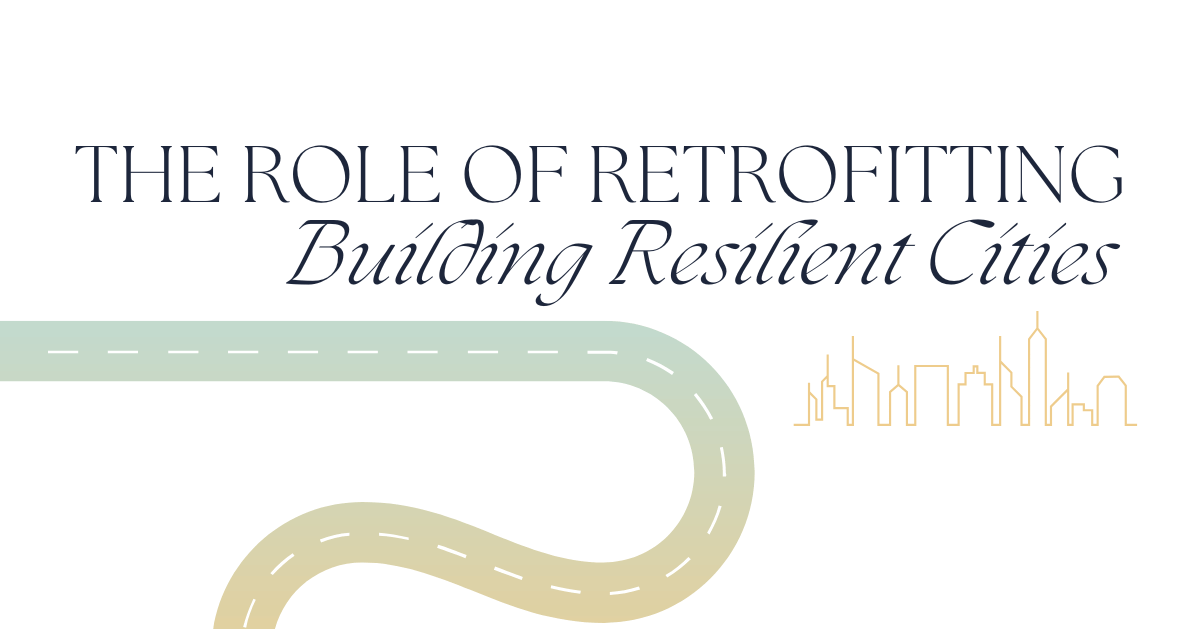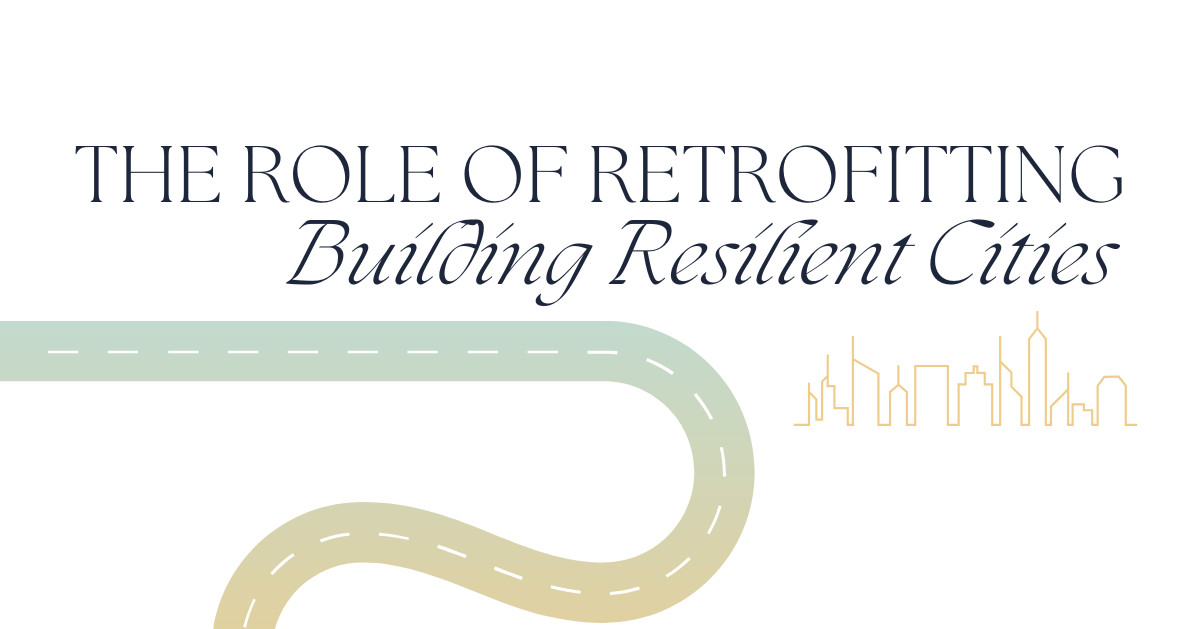
As cities grow and evolve, so do the challenges they face. Among the most pressing issues today is climate change, which has prompted urban planners and architects to explore innovative solutions to mitigate its effects. One of the most effective strategies is retrofitting—upgrading and adapting existing buildings and infrastructure to improve energy efficiency, reduce emissions, and increase resilience to environmental pressures. Retrofitting plays a vital role in building more sustainable, energy-efficient, and resilient cities, making it an essential part of our urban future.
The Importance of Retrofitting Urban Facilities to Combat Climate Change and Reduce Energy Consumption
Cities are responsible for a significant portion of global greenhouse gas emissions, primarily due to the energy consumption of their buildings and infrastructure. As populations increase and climate-related disasters become more frequent and severe, it is crucial to address how our urban environments contribute to these challenges. Retrofitting existing buildings—whether residential, commercial, or industrial—offers a cost-effective and immediate solution to reduce energy consumption and cut carbon emissions.
Retrofitting urban facilities can take many forms, including the installation of more energy-efficient heating and cooling systems, enhanced insulation, upgraded windows, and the addition of renewable energy sources like solar panels. By improving the energy performance of older buildings, cities can reduce their overall environmental footprint without the need for new construction, which can often be more resource-intensive.
Moreover, retrofitting also provides a pathway for improving the resilience of buildings to extreme weather events, such as heatwaves, floods, and storms. Strengthening a building’s ability to withstand these changes is essential in safeguarding communities from the increasing risks posed by climate change.
Examples of Successful Retrofit Projects
Around the world, cities are already reaping the benefits of retrofitting projects that not only reduce energy consumption but also contribute to the overall health and well-being of urban populations. Below are some specific examples of successful retrofit projects in both North America and Europe:
1. Prefabricated Wall Systems – Energiesprong Projects, The Netherlands
The Energiesprong initiative in the Netherlands has transformed thousands of homes into net-zero energy buildings by retrofitting them with prefabricated wall systems, advanced insulation, and solar panels. One standout project is in Arnhem, where a 1960s housing block was retrofitted to achieve net-zero energy consumption. The retrofits were completed in just 10 days per home, demonstrating the efficiency and scalability of this approach.
2. Solar Panel Integration – California Academy of Sciences, San Francisco
The California Academy of Sciences, a major urban facility, underwent a comprehensive retrofit to improve energy performance and integrate sustainable practices. The installation of a 60,000-square-foot living roof with solar panels was a centerpiece of the project. The retrofit reduced the building's energy consumption by over 30% while serving as an educational model for sustainability.
3. Thermal Insulation Upgrades – The Barbican Estate, London
The iconic Barbican Estate in London underwent retrofitting that focused on thermal insulation to improve energy efficiency. By upgrading the building’s windows and insulating walls and roofs, energy consumption for heating and cooling was significantly reduced. This retrofit not only cut costs for residents but also aligned with London’s goals of reducing carbon emissions by 68% by 2030.
4. HafenCity, Hamburg, Germany
Hamburg’s HafenCity, one of Europe’s largest urban development projects, combines retrofitting with new construction to achieve a model sustainable district. Retrofitting efforts focused on adapting historic warehouses with energy-efficient windows, enhanced insulation, and district heating systems. HafenCity’s integration of renewable energy sources and green roofs has made it a global example of urban resilience.
5. BEEP Project, Bologna, Italy
Bologna's "BEEP" (Building Energy Efficiency Project) focuses on retrofitting public buildings such as schools and municipal offices. One noteworthy project involved the upgrade of the Galileo Galilei School, where retrofitting included energy-efficient windows, wall insulation, and advanced HVAC systems. The project reduced the building's energy consumption by over 40%, showcasing how public facilities can lead by example in achieving sustainability goals.
Holistic Planning: Integrating Energy Efficiency with Urban Wellness Goals
While retrofitting buildings for energy efficiency is crucial, it should not be viewed as a standalone solution. For retrofitting to be truly effective in creating resilient cities, it must be part of a broader, holistic planning strategy that integrates energy efficiency with urban wellness goals.
Cities of the future should prioritize the health and well-being of their residents. Urban spaces need to go beyond energy savings and focus on creating environments that nurture physical, mental, and social well-being. Holistic planning means considering how retrofitted buildings contribute not only to energy conservation but also to community wellness.
For example, retrofitted buildings can be designed to maximize natural lighting, improve indoor air quality, and enhance noise insulation—all factors that contribute to a healthier living environment. Additionally, urban planners should consider the integration of green spaces, public transportation, and sustainable food systems, all of which work in concert with retrofitting efforts to create a healthier and more sustainable urban landscape.
As cities embrace these holistic approaches, they will not only become more energy-efficient and resilient to climate change but will also promote the overall well-being of their inhabitants.
FINAL THOUGHTS
Retrofitting offers an opportunity to address both climate change and the growing need for sustainable, energy-efficient cities. From prefabricated wall systems in the Netherlands to solar panel integration in San Francisco and innovative projects across Europe, retrofitting is transforming cities into hubs of resilience and sustainability. However, for these efforts to be truly impactful, they must be part of a larger, holistic approach that integrates urban wellness, sustainability, and resilience.
In the end, retrofitting is more than just a building upgrade—it’s an investment in a resilient, sustainable, and healthier future for our urban environments. By embracing retrofitting, we can ensure that cities are not only prepared to face the challenges of today but also thrive for generations to come.












0 Comments